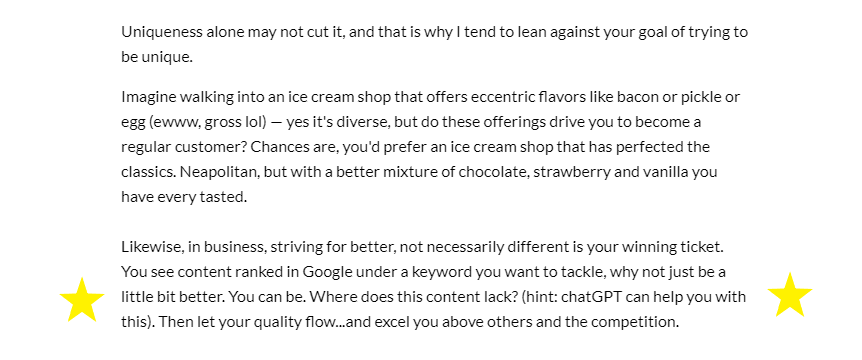In a quest to bring you the best content, I’ve embarked on a little experiment, inspired by Kyle of Wealthy Affiliate. He raised a thought-provoking question in a recent post: in order to climb the Google ranking ladder, should we aim for our content to be ‘different’ or ‘better’ than our competitors? Kyle’s vote for ‘better’ resonated with me, as did his method for finding improvements to the current top ranking articles, so I decided to put it to the test.
The Experiment Begins
My mission? To enhance an already existing article on a common household nuisance: condensation on windows. I googled the key phrase “how do I stop condensation on my windows” and clicked on the top result I was given, an informative piece from Screwfix (a UK wholesaler of tools and equipment), which you can check out here.
Then, following Kyle’s advice, I turned to my digital sidekick, ChatGPT, and asked it to analyze the article and suggest what could make a new article written by yours truly even ‘better’.
ChatGPT to the Rescue
ChatGPT jumped in, and oh boy, did it deliver! Here are some of the cool (no pun intended) suggestions it came up with:
- Go Green with Plants: ChatGPT pointed out that certain houseplants are natural dehumidifiers. Plants like spider plants and Boston ferns could be your new best friends in battling window moisture.
- DIY Desiccants: Ever thought of making your own moisture absorbers? ChatGPT suggested using silica gel – yes, those little packets that come with new shoes – to create homemade desiccant packs. A bit of DIY can go a long way!
- Smart Home Gadgets: According to ChatGPT, smart thermostats are the unsung heroes in the fight against condensation. They help maintain a perfect indoor humidity level, keeping those droplets at bay.
Blending the Old with the New
The original article from Screwfix did a great job covering traditional methods like ventilation and dehumidifiers. But here’s where GPT adds a twist:
- Window Insulation Kits: Think of these as your window’s winter coat. They’re a straightforward, budget-friendly solution to add an extra layer of insulation.
- Lid-On Cooking: This is a simple yet often overlooked tip. Cooking with lids on your pots can significantly reduce indoor humidity. (The Screwfix article only talks about opening kitchen windows when cooking, not lids)
The Verdict
My little, speedy experiment with ChatGPT was both enlightening and fun. It showed that with a dash of creativity and the power of AI, we can take a good article and give it an extra edge.
I’m guessing that the houseplant idea that ChatGPT picked up on (which was entirely omitted by Screwfix) was probably left out of their article as Screwfix do not sell houseplants. So maybe their article was leaning towards solutions that they sold (which is entirely logical). But this, however, could be your ‘way in’ so to speak. Perhaps an article that deals with a range of solutions, some equipment based, some more natural, may be a more thorough answer for your audience than the one offered by Screwfix? That’s just a brief example of the basis or essence of this ‘better’ method and it can be applied to any niche.
So, there you have it – my journey in making the good even better. Whether you’re battling condensation or just looking for ways to enhance your content, remember: a little innovation can go a long way. Keep exploring, keep experimenting, and let’s make the internet a treasure trove of ‘better’ content, one article at a time!
Happy reading, and even happier de-fogging those windows! 🌿🏠💧
PS Cheeky link to our main Wealthy Affiliate (WA) Platform Review! – how does a free ‘no payment details required’ trial to arguably the best affiliate marketing training platform sound? Read our full WA review here
PPS Here is an extract from Kyle’s post that prompted this experiment:


Be First to Comment